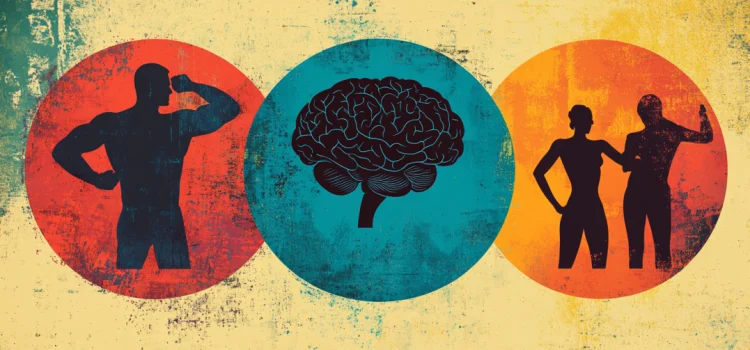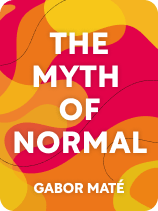

This article is an excerpt from the Shortform book guide to "The Myth of Normal" by Gabor Maté. Shortform has the world's best summaries and analyses of books you should be reading.
Like this article? Sign up for a free trial here.
How is the biopsychosocial model of health different from the biomedical model? What holistic healing practices can you try?
Physician and trauma expert Gabor Maté says that the biopsychosocial model is much more effective than the traditional biomedical model when it comes to healthcare. The biopsychosocial model takes thoughts, feelings, social interactions, and environment into account when it comes to health.
Here’s Maté’s argument for the biopsychosocial model for health and healing.
Toward a Holistic Healing Model
Having explored the mind-body connection and the impact of social conditions on our health, Maté proposes a new approach to health and healing—one in which we integrate the parts of ourselves we’ve ignored, reconnect with our true selves, and regain a sense of wholeness. To move toward this new approach to wellness, Maté encourages the medical community to embrace a more comprehensive biopsychosocial model of health, to accept the role of trauma in shaping health outcomes, and to encourage patients to adopt nontraditional healing practices like yoga, mindfulness, and plant-based psychedelics.
Embrace the Biopsychosocial Model
A critic of the conventional biomedical model, Maté instead advocates the biopsychosocial model of health, which recognizes that our thoughts, feelings, social interactions, and environment profoundly impact our health. In this model, total health encompasses emotional balance, social connection, and a harmonious relationship with your surrounding environment. By moving toward this more holistic model, Maté argues, we can better address the root causes of illness rather than merely treating symptoms.
For example, a physician who decides to integrate the biopsychosocial model into her practice might treat a patient complaining of chronic headaches by exploring the patient’s work environment, stress levels, and emotional state before prescribing medication. This physician might discover that the patient is experiencing significant job-related stress and social isolation. She might then refer the patient to a stress-management workshop and a community group to improve his social connections.
| Tension Myositis Syndrome Maté’s work in The Myth of Normal and some of his other works like When the Body Says No is influenced by the late John Sarno, who was a pioneer in research on the mind-body connection in disease, publishing several books on the topic between 1982 and 2006. Sarno coined the term Tension Myositis Syndrome (TMS) to refer to any condition in which one’s psychological state causes physical symptoms, such as chronic pain or digestive issues. Fibromyalgia, for example, is one of those conditions that has no identifiable physiological cause, but induces chronic symptoms like debilitating fatigue and widespread pain. Sarno theorized that TMS symptoms were related to the psychological pressures people live with when they feel the constant need to live up to others’ expectations and then repress their negative emotions. Although much of Sarno’s work was disregarded by his colleagues and the larger medical community, some physicians today, like John Sacks, have followed in his footsteps and are actively treating TMS through a variety of psychological therapies and integrative medicine. |
Accept the Reality of Past Trauma
Maté writes that acknowledging and accepting the reality of past trauma is a key step toward healing. He posits that denial or suppression of trauma can not only prevent you from understanding the root causes of your suffering but can also block the path to resolving your emotional wounds and moving forward. Therefore, by embracing our traumas and working through them, we can reclaim our power over our lives and begin the path toward holistic healing and well-being.
For example, a psychiatrist working with a support group for people experiencing PTSD might introduce exercises to help participants identify how their traumas have shaped their behaviors, relationships, and health. Techniques could include creating a personal narrative timeline, where members can visually plot significant traumatic events alongside their physical and emotional responses, fostering a deeper understanding of their life’s trajectory and the intersections of trauma and health.
| Is Trauma Necessary for Growth? Despite Maté’s emphasis on the harmful effects of trauma, some authors take a different view. In The Happiness Hypothesis, psychologist Jonathan Haidt points to research suggesting that people need some amount of struggle in their lives to reach their full potential. He notes that people who suffer setbacks, even tragedies like the loss of a loved one, often find new strengths as a result of their experience. Setbacks, according to Haidt, can alter our life story or self-narrative. The experience of triumph over loss enables us to replace a story about our frustrated hopes or positive experiences turned sour with a more compelling story about overcoming adversity and using that experience to learn compassion and empathy for others. And in the end, this is a more fulfilling story to have about ourselves. Haidt notes that our teenage years in particular are the period in our lives when our self-narratives begin to truly coalesce and some of our most important life experiences take place. Events that happen during this time are those we revisit the most throughout the rest of our lives, serving as a constant point of self-reference. Accordingly, some adversity in your teenage and early adulthood years, if properly overcome, can provide a real character-building boost later in life. |
Implement Holistic Healing Practices
Maté writes that there are various practices, including yoga and meditation and the use of psychedelics, that have healing potential. He writes that these practices can jump-start the process of healing from trauma and overcoming deep-seated emotional and psychological issues.
Yoga and Meditation
Maté explains that yoga and meditation offer more than just physical benefits; they facilitate a deeper connection with the self. Through these practices, you can achieve a state of mindfulness that allows you to be present and fully engaged with your current experiences, free from judgment. This state of mindfulness allows you to observe your own thoughts without becoming entangled in them—offering a sense of peace and control.
(Shortform note: Despite its beneficial effects on mental and physical health, yoga can result in severe injuries—especially for those with pre-existing physical weaknesses and amateurs who lack proper training. Medical literature has documented serious injuries like Achilles tendon tears, sciatic nerve damage, and strokes caused by certain yoga poses. These injuries arose from extreme neck movements and hyperflexion, which can damage vertebral arteries and significantly affect the brain. As a result, some practitioners prioritize awareness and simple poses over complex postures and inversions like headstands, which can be too risky for many people.)
The Therapeutic Potential of Psychedelics
Maté also explores the therapeutic potential of psychedelics—emphasizing the importance of using them within proper guidance and protocols. He notes that they dissolve the barriers between the subconscious and conscious mind, providing individuals with access to hidden fears, desires, and anxieties. This can be a powerful experience that allows for significant insight and personal growth. He writes that psychedelics can facilitate transformative experiences that reshape how individuals perceive themselves and the world around them, enabling a deeper understanding of—and healing from—trauma.
| The Risks of Psychedelics Although Maté does emphasize the importance of using psychedelics under proper supervision, it’s important to note the very real risks that can come from using these substances. Experts warn that psychedelics like ketamine and psilocybin, while promising in treating conditions like depression and presenting little addiction risk, can potentially trigger psychotic or manic episodes, primarily in individuals predisposed to schizophrenia or bipolar disorder. Psychedelics can have physical effects as well as psychiatric ones. Notably, they’ve been shown to increase heart rate and blood pressure. While this doesn’t pose a significant concern in controlled clinical scenarios, regular or frequent use of these substances might present cardiovascular risks. These substances are also known to significantly change brain activity, potentially leading to seizures in epilepsy patients or exacerbating conditions like intracranial pressure. Finally, their interaction with antidepressants and other medications can cause dangerous or unpredictable responses. |

———End of Preview———
Like what you just read? Read the rest of the world's best book summary and analysis of Gabor Maté's "The Myth of Normal" at Shortform.
Here's what you'll find in our full The Myth of Normal summary:
- Why we need to rethink what “normal” means when it comes to mental health
- How certain social conditions instill and reinforce trauma
- The role of trauma in shaping health outcomes






